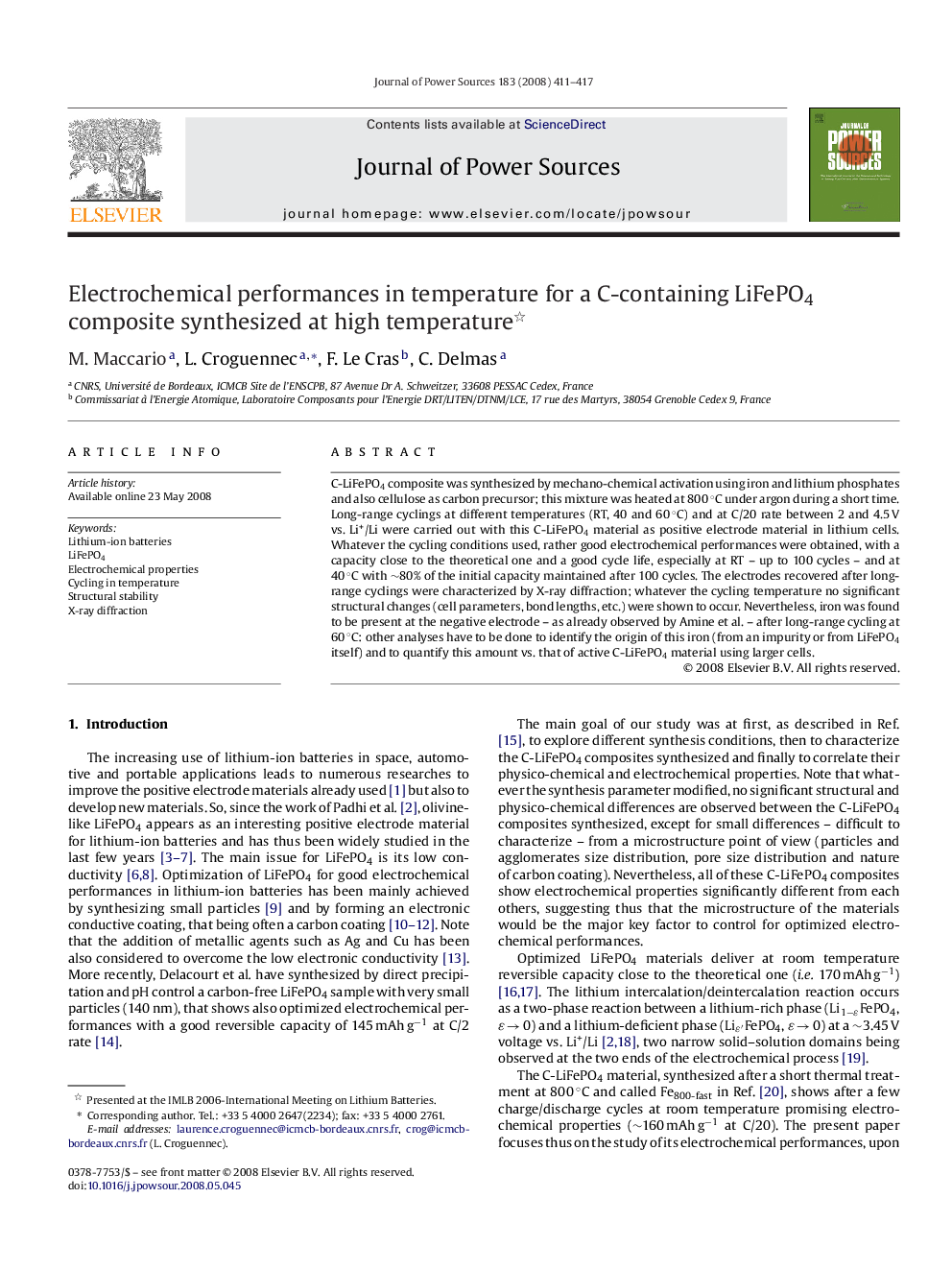| Article ID | Journal | Published Year | Pages | File Type |
|---|---|---|---|---|
| 1285431 | Journal of Power Sources | 2008 | 7 Pages |
Abstract
C-LiFePO4 composite was synthesized by mechano-chemical activation using iron and lithium phosphates and also cellulose as carbon precursor; this mixture was heated at 800 °C under argon during a short time. Long-range cyclings at different temperatures (RT, 40 and 60 °C) and at C/20 rate between 2 and 4.5 V vs. Li+/Li were carried out with this C-LiFePO4 material as positive electrode material in lithium cells. Whatever the cycling conditions used, rather good electrochemical performances were obtained, with a capacity close to the theoretical one and a good cycle life, especially at RT - up to 100 cycles - and at 40 °C with â¼80% of the initial capacity maintained after 100 cycles. The electrodes recovered after long-range cyclings were characterized by X-ray diffraction; whatever the cycling temperature no significant structural changes (cell parameters, bond lengths, etc.) were shown to occur. Nevertheless, iron was found to be present at the negative electrode - as already observed by Amine et al. - after long-range cycling at 60 °C: other analyses have to be done to identify the origin of this iron (from an impurity or from LiFePO4 itself) and to quantify this amount vs. that of active C-LiFePO4 material using larger cells.
Keywords
Related Topics
Physical Sciences and Engineering
Chemistry
Electrochemistry
Authors
M. Maccario, L. Croguennec, F. Le Cras, C. Delmas,
